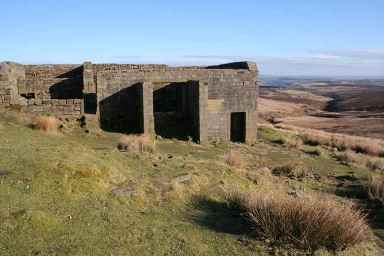Who was Emily Brontë and what inspired her writing?
Emily Brontë, author of the classic novel Wuthering Heights was born on this day in 1818.
Emily was the third eldest of the four surviving Brontë siblings. Sisters Charlotte, Emily and Anne were all writers. Not many images of the family remain with us - indeed, there is some disagreement as to whether the portrait above shows Emily or Anne.
What name did Emily Brontë write under?
Their first volume of poems was published under the pseudonyms Currer Bell, Ellis Bell and Acton Bell.
Their true identities remained a secret until after novels Jane Eyre by Charlotte, Agnes Grey by Anne and Wuthering Heights by Emily had been published, by which time speculation and rumour were rife.
On Europeana, you can find Emily Jane Brontë's entry in the local baptismal register.
The register shows that she was baptised on 20 August 1818, daughter of the Reverend Patrick Brontë , Minister of Thornton, and Maria Brontë.
Emily died of tuberculosis, on 19 December 1848 aged just 30. She was interred in the Church of St. Michael and All Angels family vault, Haworth, West Yorkshire.
What inspired Emily Brontë's Wuthering Heights?
Wuthering Heights is Emily Bronte's great novel, which has resonated through centuries and inspired many more artists.
It is known for its descriptions of the wild, romantic and untamed scenery of the Yorkshire Moors as well as the passionate love story at its centre.
The French translation above gives the novel the title Un Amant ('A Lover') while the German title Sturmhöhe translates as 'Storm heights' and a Spanish title Cumbres Borrascosas also references blustery or stormy uplands.
Sales of Wuthering Heights quadrupled in 2009 because of a reference made to it by lead character Bella in the hugely popular teen vampire series, Twilight, by Stephanie Meyer.
To transport yourself to this symbolic and inspiring landscape, take a look at some images of Haworth and have someone read out the following excerpts from Emily's novel to you.
 A view of Top Withens, on Haworth Moor. Thought to be the model for Wuthering Heights. Image by Mark Anderson, CC BY-SA.
A view of Top Withens, on Haworth Moor. Thought to be the model for Wuthering Heights. Image by Mark Anderson, CC BY-SA.
From Chapter 10 :
'They sat together in a window whose lattice lay back against the wall, and displayed, beyond the garden trees, and the wild green park, the valley of Gimmerton, with a long line of mist winding nearly to its top (for very soon after you pass the chapel, as you may have noticed, the sough that runs from the marshes joins a beck which follows the bend of the glen). Wuthering Heights rose above this silvery vapour; but our old house was invisible; it rather dips down on the other side.'
From Chapter 18:
'The abrupt descent of Penistone Crags particularly attracted her notice; especially when the setting sun shone on it and the topmost heights, and the whole extent of landscape besides lay in shadow. I explained that they were bare masses of stone, with hardly enough earth in their clefts to nourish a stunted tree. From Chapter 34: I lingered round them [the gravestones], under that benign sky: watched the moths fluttering among the heath and harebells, listened to the soft wind breathing through the grass, and wondered how any one could ever imagine unquiet slumbers for the sleepers in that quiet earth.'

